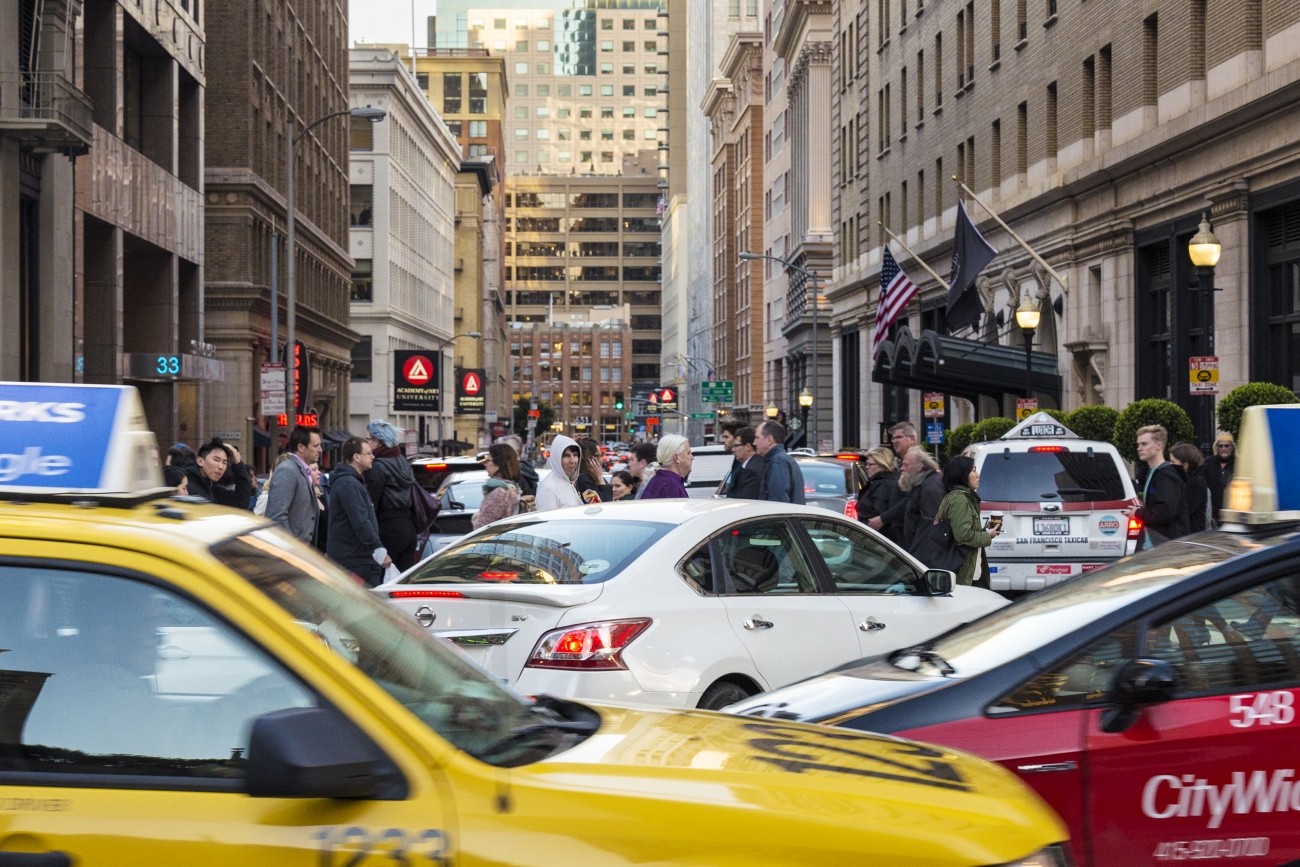
We recently hosted a voluntary meeting of our Downtown Congestion Pricing Study's Policy Advisory Committee to discuss congestion pricing programs in other cities. Our project team held a virtual presentation on the topic on March 27. Get a recap below, or watch the presentation here with Q&A.
A note on COVID-19
Amid the global pandemic, we realize congestion has mostly vanished, and we’re all trying to keep ourselves and our families healthy.
What does coronavirus mean for our Downtown Congestion Pricing Study? We don’t know exactly what the future will look like. However, in the past, San Francisco’s economy has been resilient. The pandemic is spurring cities to think about the kind of future they want. The work we do now can help us plan and prepare for the recovery.
In that spirit, we are continuing work on this study, focusing on technical work that we can do now. We have paused in-person public outreach for the time being. We will continue to hold virtual Policy Advisory Committee meetings online and explore new ways to connect with the public.
Congestion Pricing: A Global Concept
Cities around the world have implemented congestion pricing and several more are following in their footsteps. Every city has different demographics, geography, and needs, so congestion pricing is carried out differently in each place. We can learn from results elsewhere as we analyze what the effects of a congestion pricing program might be in San Francisco.
We focused our case studies on the existing systems in London and Stockholm because they have been in place for years. In addition, we profiled New York because it is the first U.S. city to approve congestion pricing for implementation.
Here is a quick summary of how London, Stockholm, and New York have designed their programs:
London
Central London first implemented its congestion pricing program in 2003. The program charges drivers the equivalent of a $15.05 flat fee to travel into a 8.5 square mile area of central London on weekdays from 7 a.m. to 6 p.m., generating about $182.1 million annually. The system uses cameras to read vehicle license plates and charge drivers. Residents who live in the congestion zone are eligible for a 90% discount of the fee. Other discounts and exemptions exist and are mainly based on vehicle type, such as emergency vehicles, buses, and taxis.
London expanded its bus system to provide driving alternatives when congestion pricing was introduced. The city also reinvests congestion pricing revenues back into their public transit. The first year of the program resulted in a 38% increase in transit ridership, a 30% decrease in traffic, and a 12% decrease in greenhouse gas emissions.
Recently, London has updated its congestion pricing program to adapt to the increase in congestion caused by the rise of ride-hailing vehicles. Ride-hailing vehicles were previously exempt from the charge and now must pay the fee.
Stockholm
Stockholm first tested congestion pricing as a pilot program before implementing a permanent program. The pilot program was launched in late 2006 for seven months. In coordination with their pilot program, Stockholm increased driving alternatives by expanding its public transit system.The City also re-invested the revenue from the program back into public transit and, as a result, reduced fares—benefitting young and low-income individuals the most.
Prior to its introduction, two-thirds of residents opposed the proposal. Yet as congestion declined by 30%-50% during the pilot program, two-thirds of residents voted to make the program permanent. The first year of the program resulted in a 5% increase in transit ridership, a 22% decrease in traffic, and a 14% decrease in greenhouse gas emissions.
The permanent program launched in January 2007 and charges drivers a varying fee to travel into a 22 square mile area on weekdays between 6 a.m. and 6:30 p.m. The highest fee - during the most congested times of day - is the equivalent of $4.75 to enter the zone, or $14.25 as a daily maximum. The program’s annual net revenue is $155 million. Like London, Stockholm also charges drivers using cameras and automatic license plate recognition. Certain vehicle types are exempt from the fee (such as emergency vehicles and buses of a certain weight.)
New York City
New York City is the first U.S. city to approve congestion pricing for implementation.
With its subway in need of major maintenance and upgrades, New York developed a subway modernization and expansion plan. The congestion charge is one of two major funding sources to deliver the plan.
New York is implementing pricing in a phased approach. The first phase established a per-trip surcharge on taxi and rideshare trips companies. The second phase will implement the congestion pricing system and is set to begin in 2021. New York’s congestion pricing zone will begin at 60th Street and it will encompass the whole central business district. New York has not yet set a fee amount, but recent analysis determined that fee amounts ranging from $3.06 to $9.18 would result in annual revenue between $810 million and $1.1 billion. The program may include fee exemptions for emergency vehicles and people with disabilities as well as tax credits for people who make less than $60,000 a year.
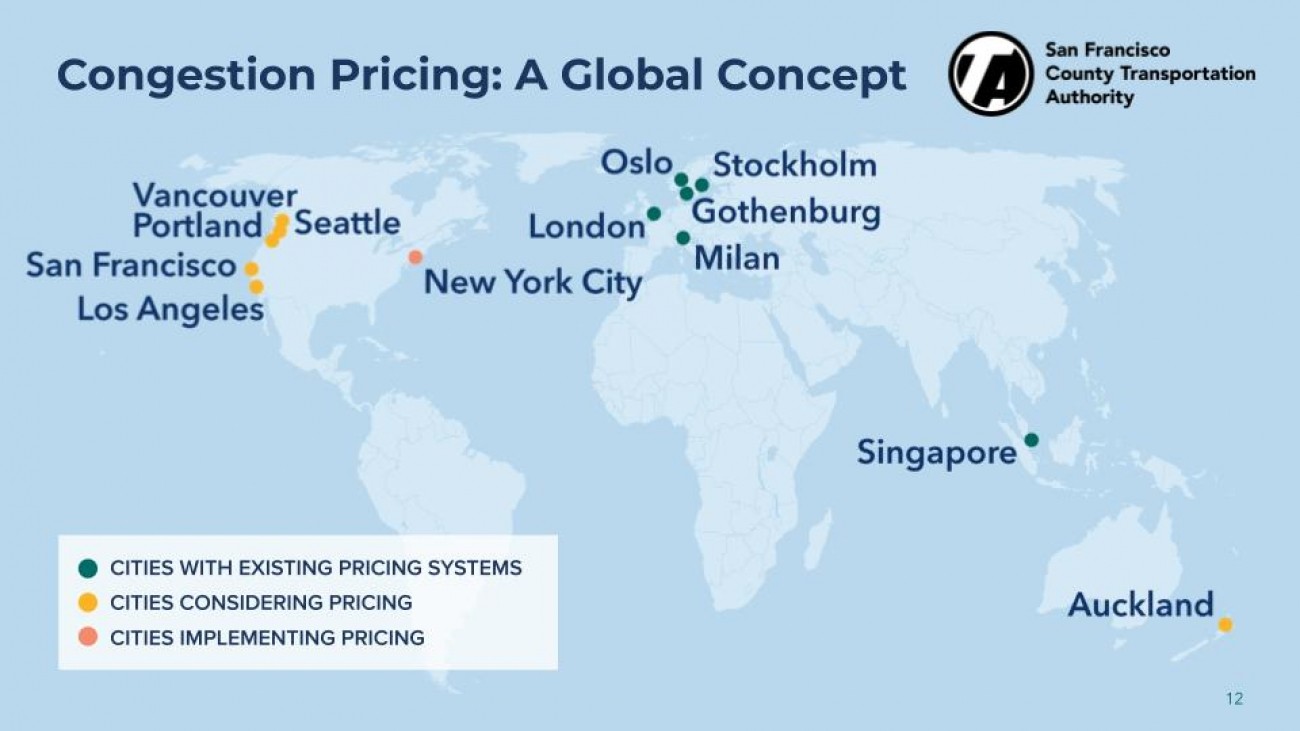


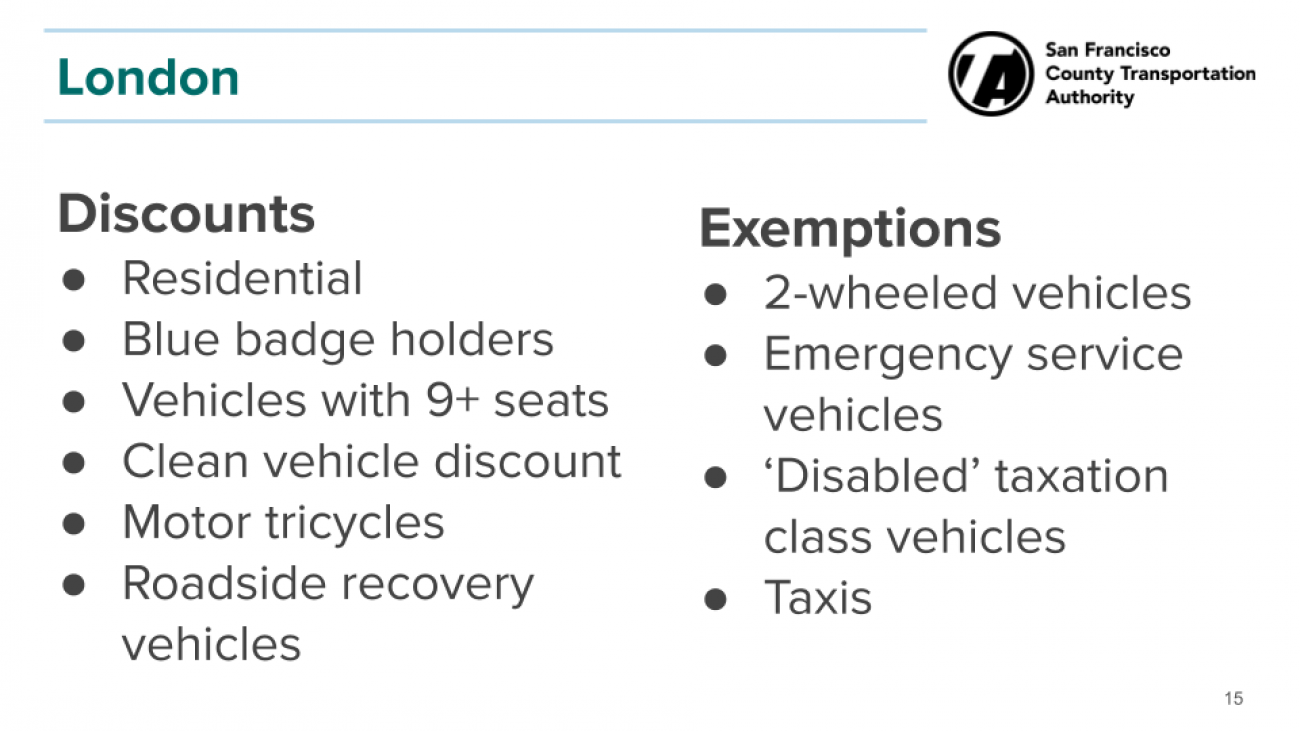

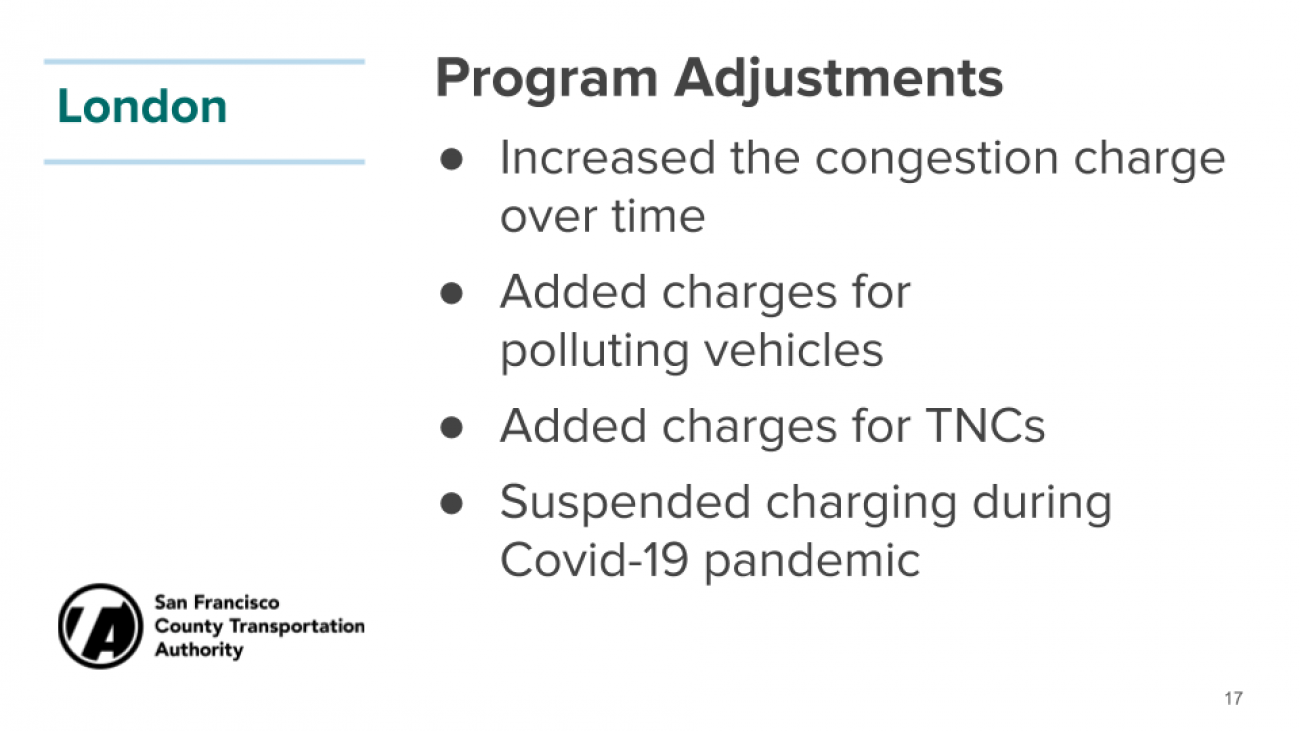
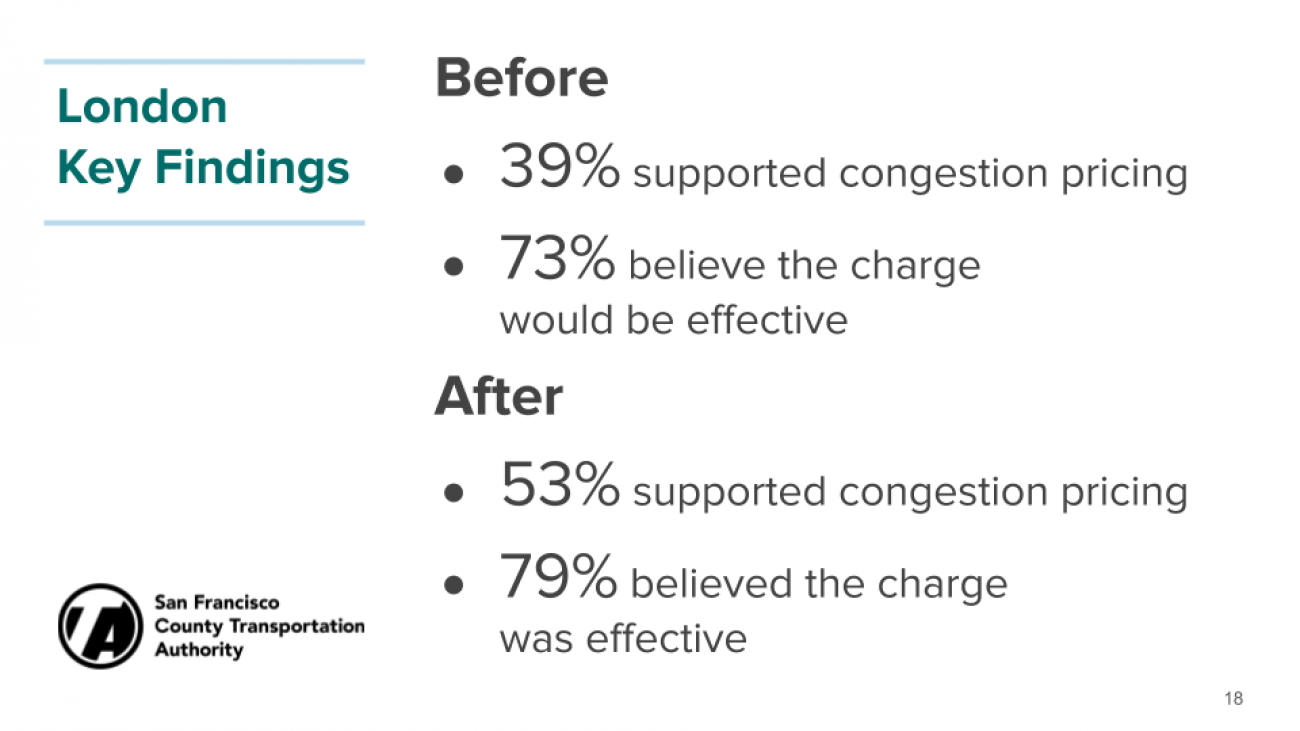
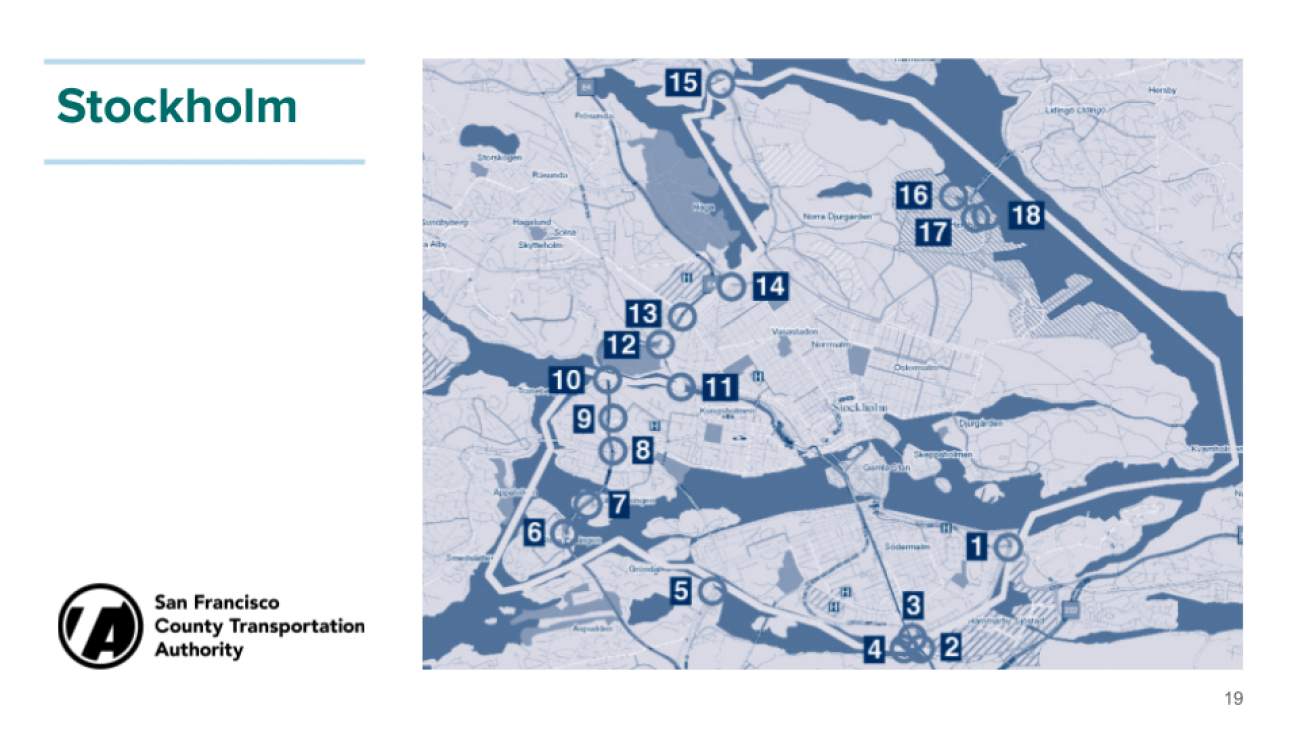

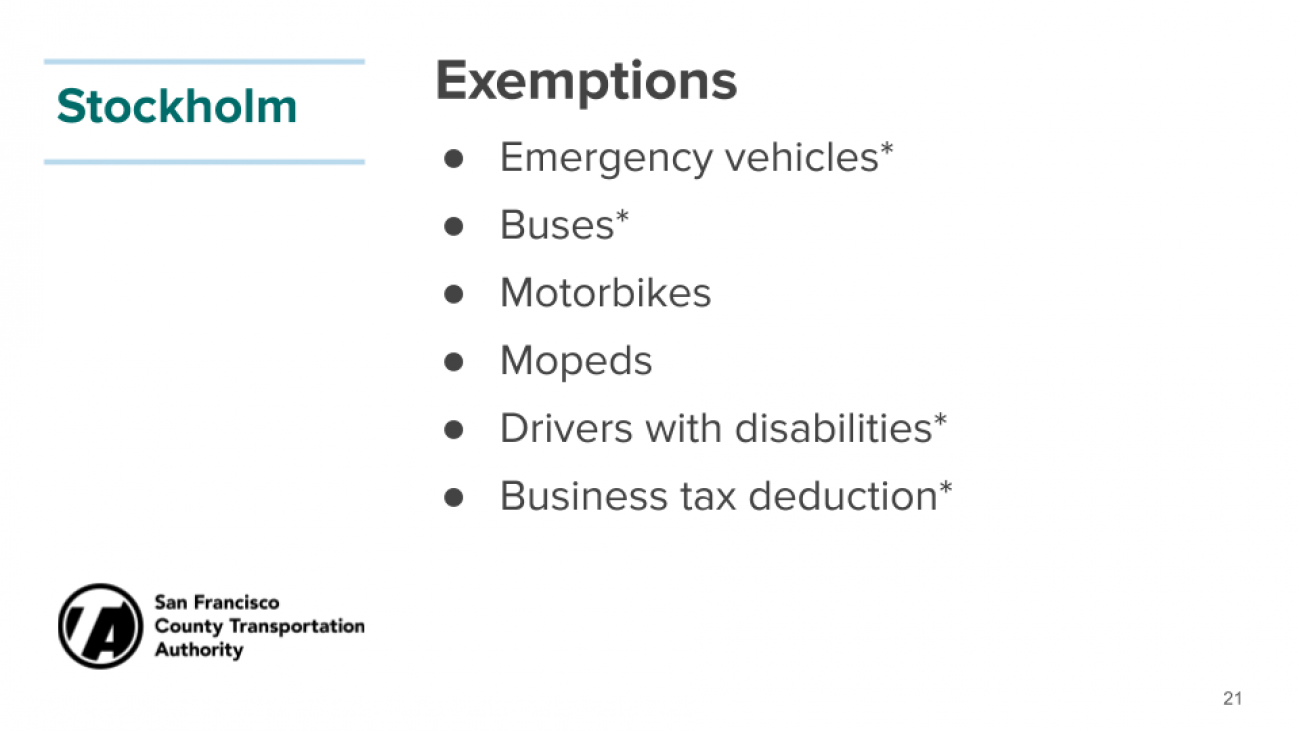
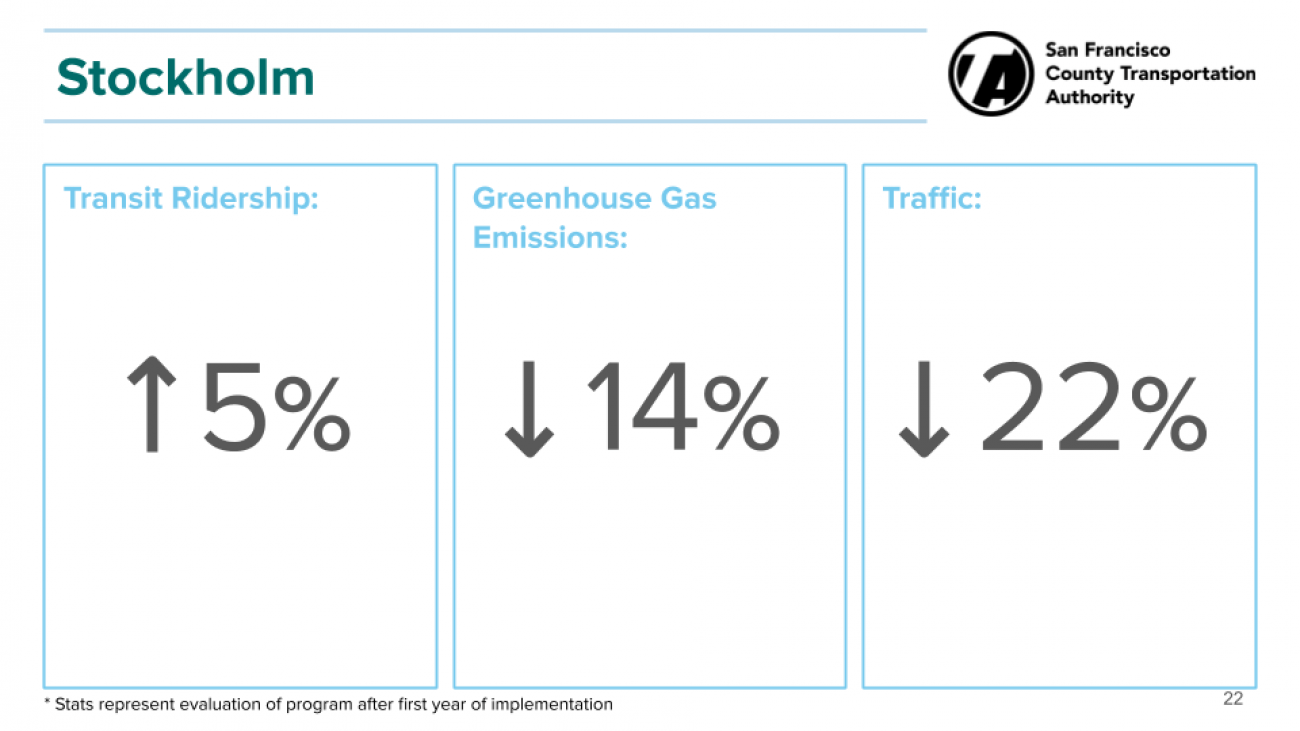
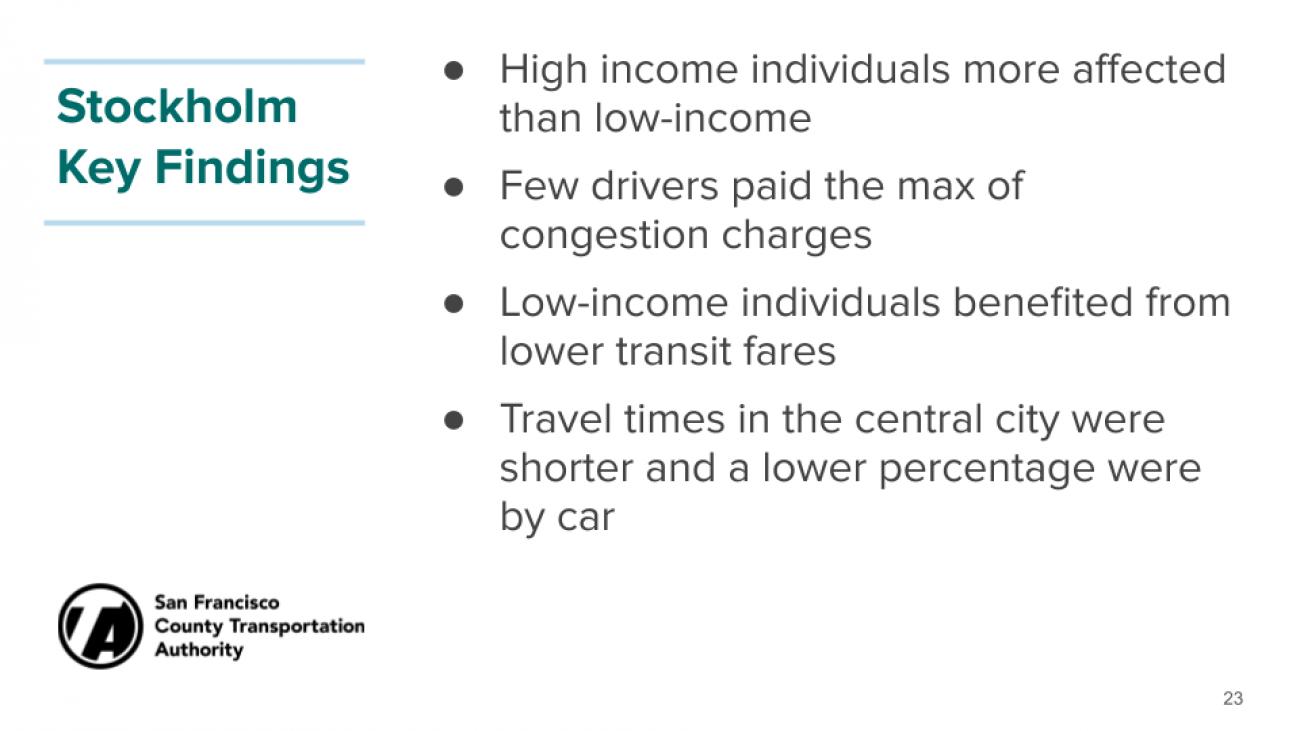
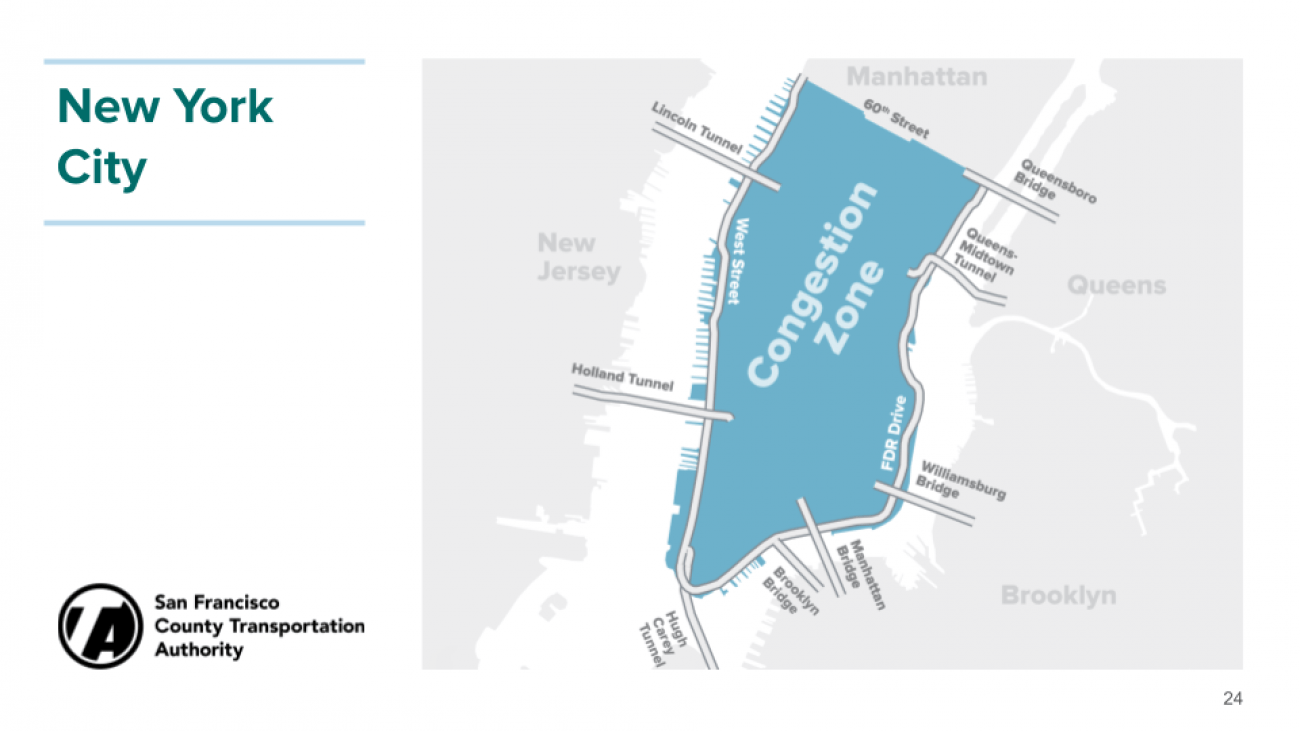
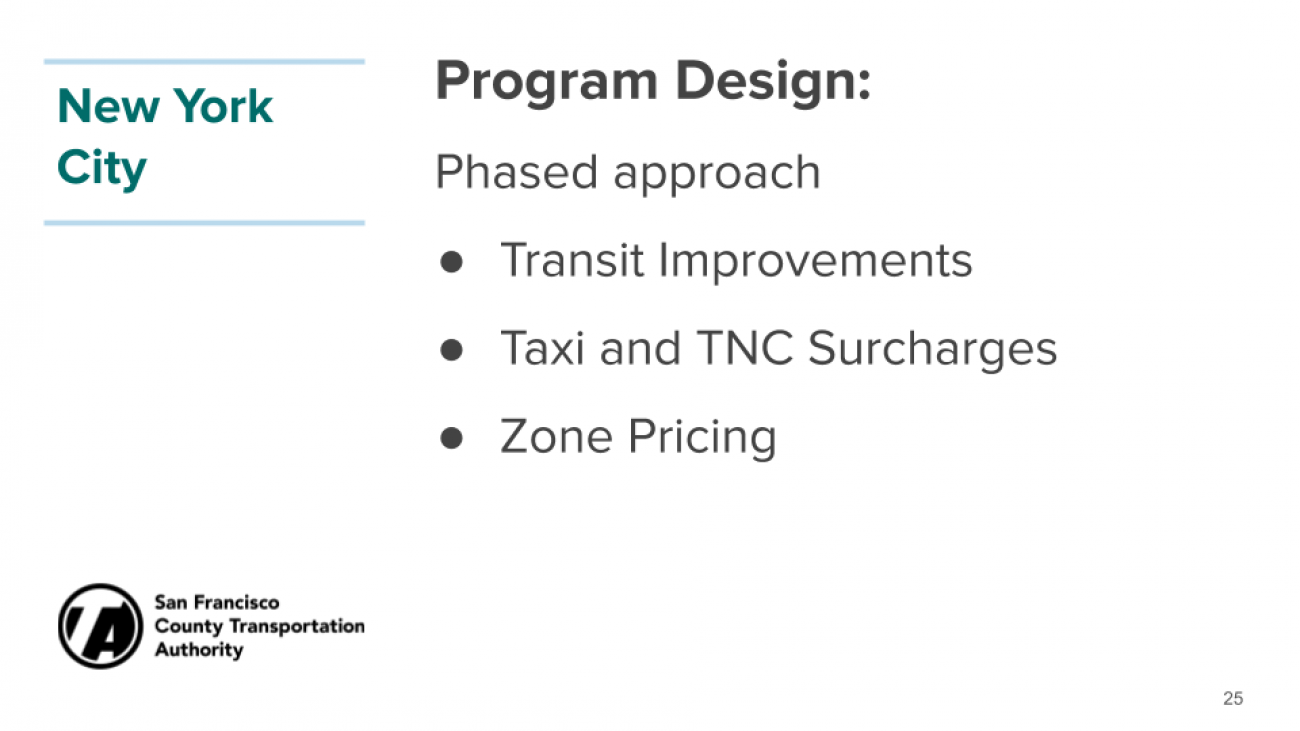
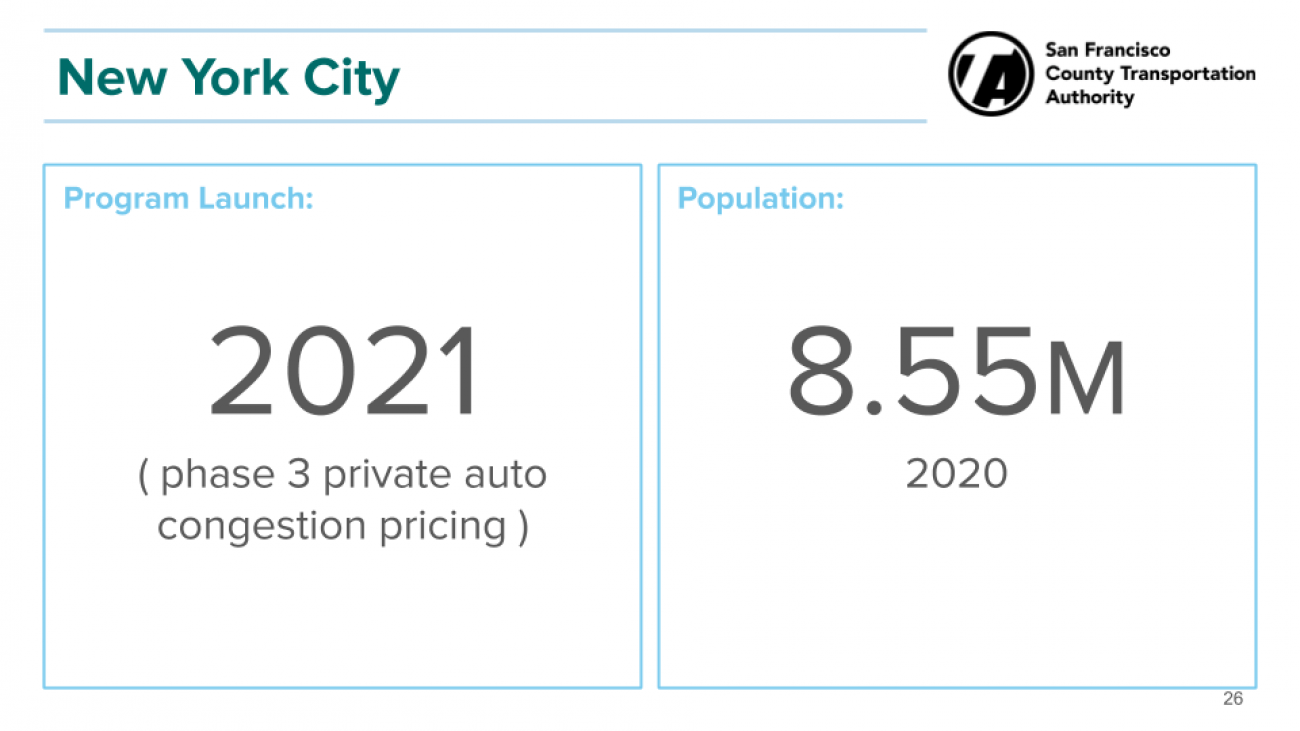
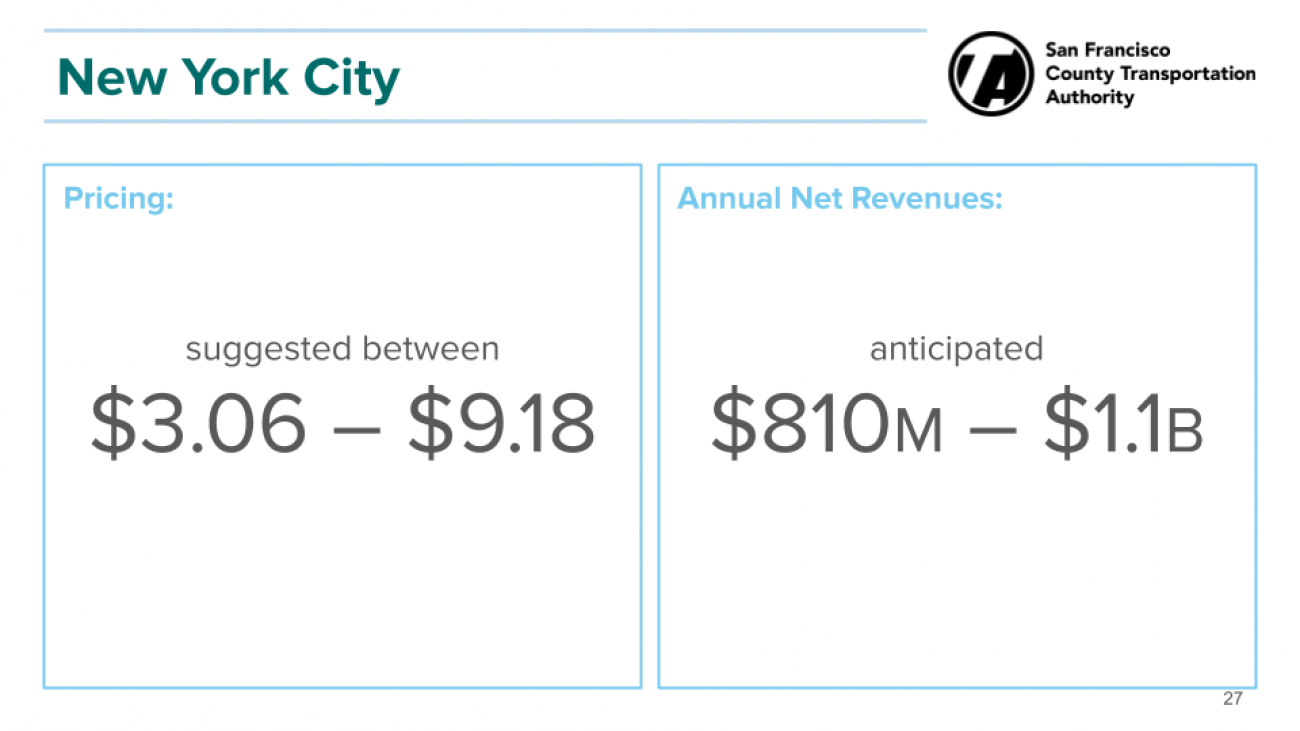

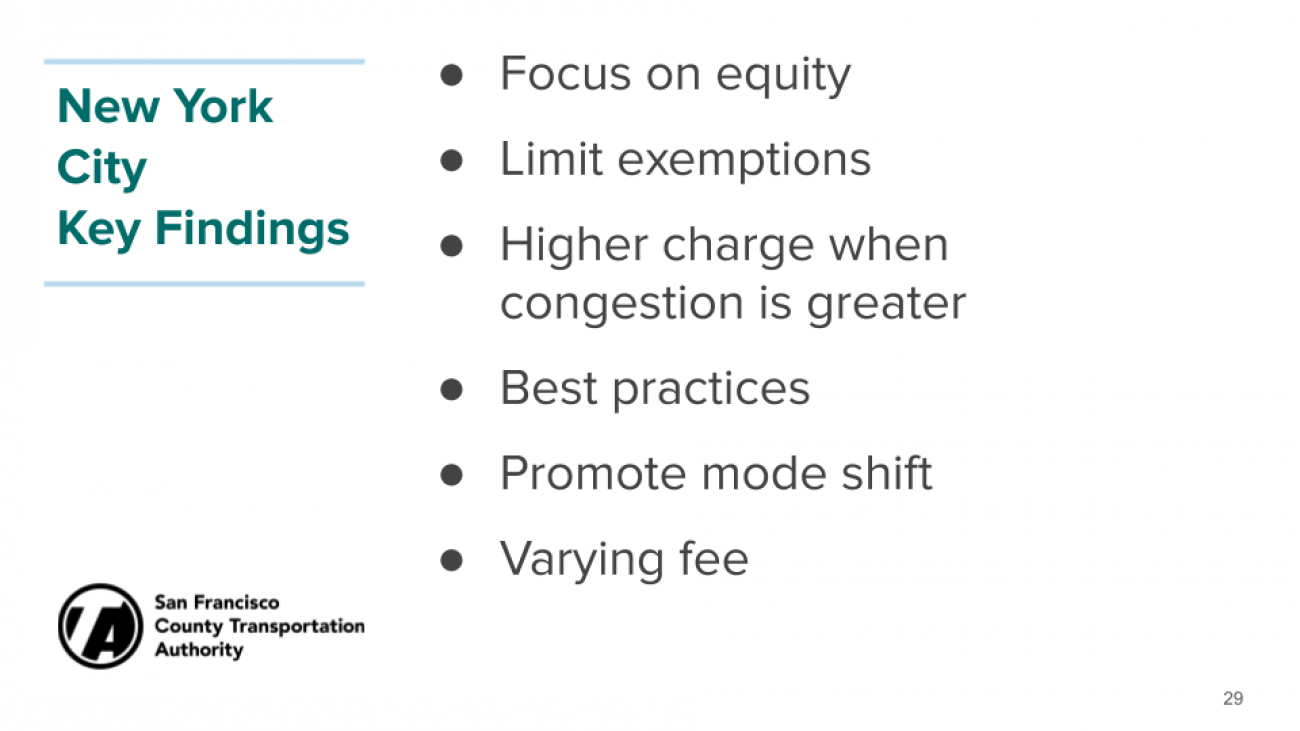
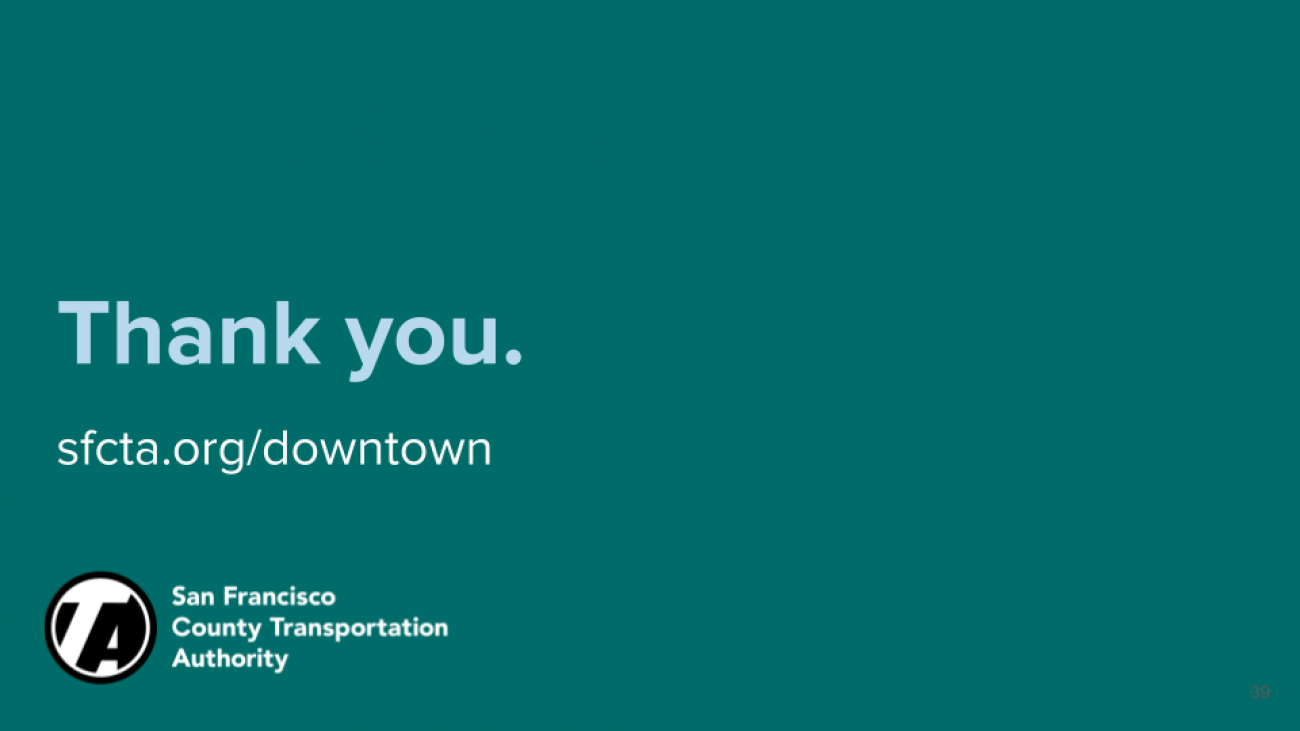
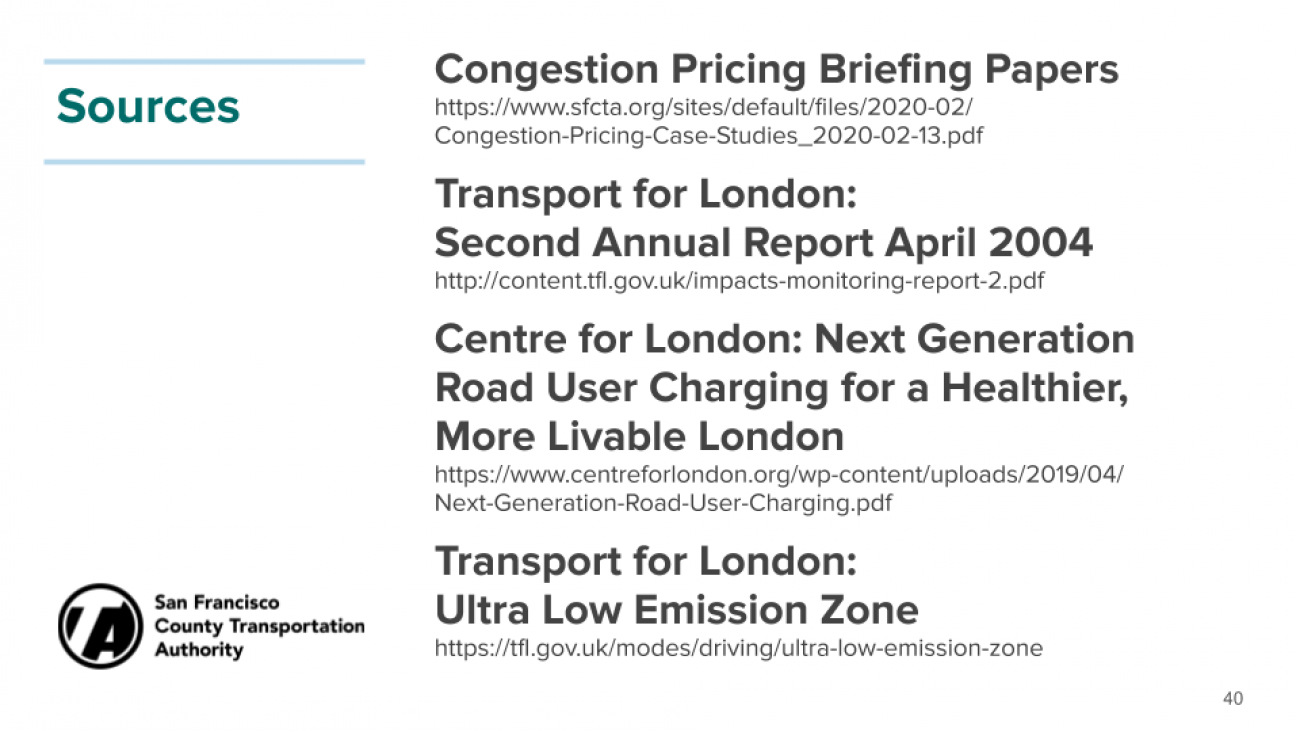
Visit our website to learn more about San Francisco’s downtown Congestion Pricing Study including upcoming events and opportunities to get involved.
Resources
Watch our presentation on congestion pricing in other cities



